
|   |

|   |
The 15th edition of Navadisha - Tapati Chowdhurie e-mail: tapatichow@yahoo.co.in September 12, 2024 Upasana Centre for Dance recently celebrated the 15th edition of Navadisha, a two-day classical dance festival at Gyan Manch, Kolkata. This prestigious event continues to celebrate and showcase the richness and diversity of classical dance forms. The festival commenced with a performance by Odissi dancer Subikash Mukherjee, presenting an invocation to Lord Kartikeya reflecting on his divine attributes. He is the one who rides the peacock and is worshipped as Mahasena; he is the elder son of Parvati and Shiva who is worshipped by the yogis. It is believed that Lord Kartikeya is the one whose boons enable an individual to be blessed with a male progeny - a very patriarchal thought. The composition was well researched and used all the eight names of Kartikeya with each name representing a divine quality of the lord. Debapom Das Basu has authored the sloka, while the music was composed and vocalized by Himanshu Shekar Swain. Budhanath Swain played the mardala to the item conceptualized and choreographed by Subikash Mukherjee. Subikash's piece rendered with care to showcase the style of the form was a good start to the festival. 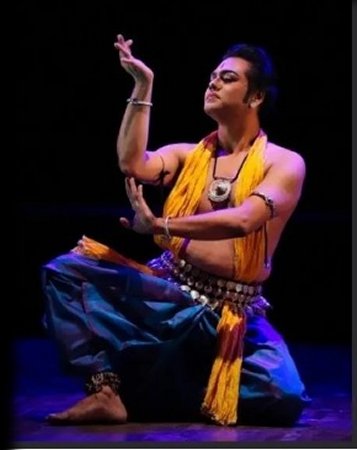 Subikash Mukherjee 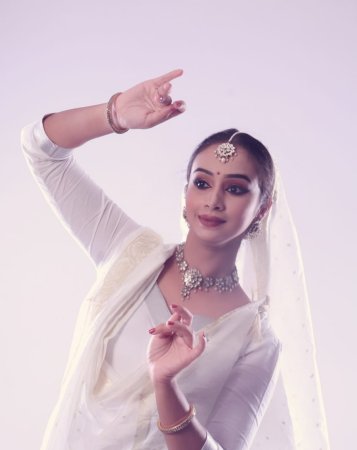 Nilopa Maitra Nilopa Maitra followed with 'Raah,' a piece exploring the journey of life through the metaphorical concept of paths and destinations. 'Raah' is a tale that explored the journey of life, drawing inspiration from the poignant verses of Rahat Indori and Nasir Kazmi. The choreography beautifully captured the essence of longing, anticipation, and the search for meaning along chosen paths. Set to the enchanting sitar melodies of Chandrachur Bhattacharya and the soul-stirring music by Ashok Datta, 'Raah' was a sort of inspiration to the audience to reflect on the choices we make, the roads we travel, and the destinations we seek in our quest for fulfillment and purpose. Beautifully expressed through mime and dance the piece was savoured by the rasikas. Nilopa's mother and guru Paramita Maitra was the choreographer of the piece. Priyanka Talukdar and Sriparna Sarkar enchanted the audience with "Snihiyami," which delves into the eternal, destructive love story of the moth and the flame in lasya Manipuri style - a beautiful idea. Upasana Centre for Dance presented 'Indradhanush,' a choreographic exploration of the vibrant colours of Kathak dance, akin to the rainbow's hues. The dancers glided on the stage negotiating time and space aesthetically. The costumes added to the mystery and magic of colours. 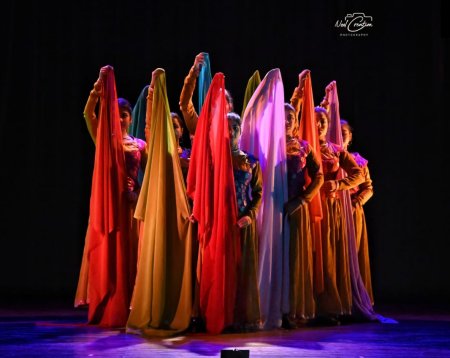 Indradhanush by Ashimbandu Bhattacharya 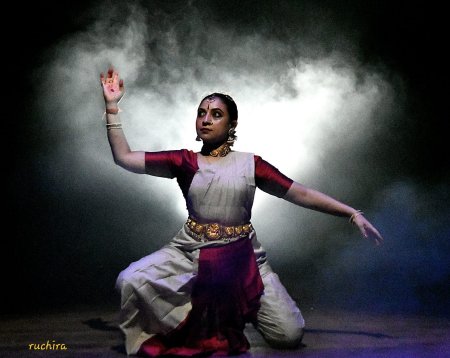 Jalsa Chandra 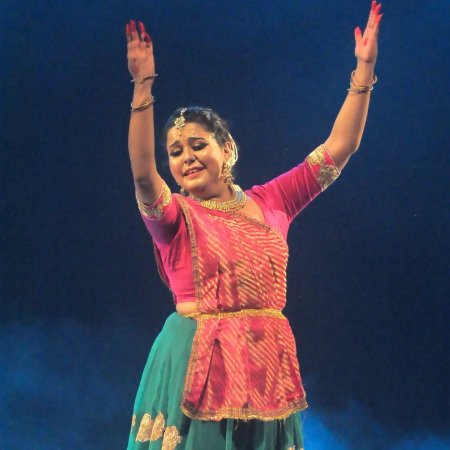 Trina Roy Kathak dancer Trina Roy from the house of Pandit Jailal - her great grandfather - performed 'Anuragah' that was "A Journey from Longing to Bliss" and held the audience to a state of bliss. In quiet moments of our lives, we often find ourselves yearning for something more - a sense of completeness that eludes us, a longing that stirs our souls. The concept captured this universal desire through the exquisite art of Kathak. It invited the audience to explore the profound emotions that arise from our deepest yearnings, whether it be a Nayika awaiting the return of her beloved, a Bhakt seeking a divine glimpse of the eternal, or an artiste striving to feel the presence of God through her art. The musical accompaniment included two soulful bandishes by Pt. Manas Chakraborty, beautifully arranged by Sunando Mukherjee, who also played the sarod. The vocal rendition was by Jaydeep Sinha, with tabla by Subir Thakur. Bharatanatyam couple Milan Adhikary and Mousam Yasmin performed 'Misrani Alarippu,' illustrating the blossoming of a dancer based on rhythm, followed by the rhythmic Tillana. Their rendition was well synchronized and brought the first day's program to a happy end. The second day opened with Arpita Venkatesh's 'Natyam Sungitani Vaditram,' a production based on the four kinds of instruments described in the Natyashastra. Scripted, conceived and composed by Arpita Venkatesh, musical support of Sukhamaya Bhattacharya and rhythm composition of Kishore Ghosh, the evening showed promise. Our ancient text Natyashastra has described four kinds of vadyas or instruments which are 'tat' (string instrument), 'sushi' (flute), 'ghana' (solid instrument), 'avanaddha' (skin instrument). Gandharva Vidya, which all the Gods and Goddesses are immensely fond of, is based on 'swara', 'taala', and 'pada'. 'Swara' comes from 'veena' and 'kantha'; flute produces 'swara' as well. On the other hand, 'ghana' and 'avanaddha' maintain a certain beat or rhythm. Arpita and her group presented a new Odissi dance production based on this unique concept of an aesthetic milieu of instruments. Talasrita nritta, Bhavasrita nritya, and Rasasrita natya are enhanced by music, and it is important for performance. It was an added piece to the already existing repertoire. Udok Performing Arts presented "Shankara Jatadhara," a Tamil composition celebrating various aspects of Shiva. Lord Shiva is the presiding deity of dance who is praised for being the king of dance as Nataraja. His tandava dance represents cosmic energy and dynamism. Shankara Jatadhara displayed the dynamic aspects of Shiva, who also presides over the five elements of creation - Ether, Air, Fire, Earth and Water. The choreographer's deeper intention through this piece was to remind us to be more mindful about abusing the elements of creation. 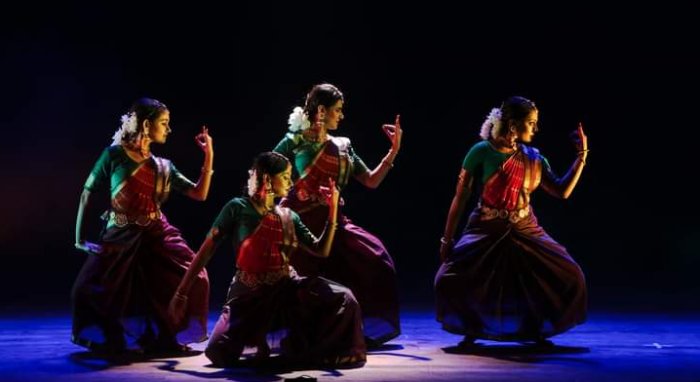 Moumita & group The piece has been set to music by O.S. Arun and choreographed by Geeta Chandran. It was well learnt and presented to the delight of the audience. Their concluding item was a Kavit written and composed by Ashimbandhu Bhattacharya. Music composition and mridangam was by Shankar Narayanswamy, while the concept and choreography was by Rajib and Moumita performed by Pubali Saha, Anisha Sarkar, Soumita Sen & Moumita. Manipuri performer - of Guru Bipin Singh's style - Kankana Singh's 'Kundalini' explored the form of Aadi Parashakti residing within us, that wakes up to unite with Param Shiva. Aadi Parashakti resides at the deepest core of our physical being. Kundalini and Param Shiva unite in the Sahasrara Chakra, the ultimate destination of any sadhana. This divine feminine energy traverses through the seven chakras, all symbolised by seven different colours and moves towards the ultimate consciousness, towards blissful completeness. This awakening itself results in harmony between Prakriti and Purusha, feminine and masculine. The divine union of Shiva and Shakti in Sahasrara Chakra manifests as Ardhanarishwara, the divine duality. The presentation was based on the symbiosis of Lasya and Tandava angika of Manipuri dance and used various sinuous movements, symbolic of the infinity sign. Conceptualized by Nilambhar Chakraborty and Kankana Singh, the item was based on taal Tanchep of 4 beats, Khujitaal of 16 beats and Dui Taal macha of 12 beats. Music direction was by Sudipto Chakraborty, while dance was envisioned by Kankana Singh. 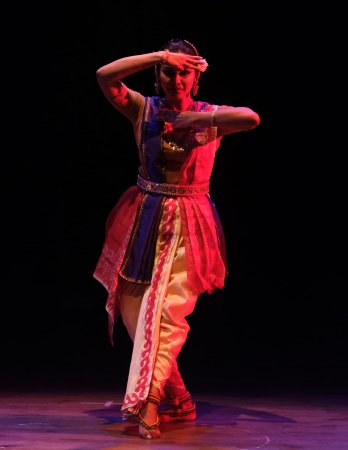 Kankana Singh 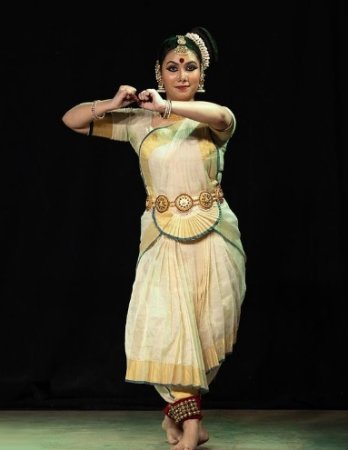 Malavika Menon Mohiniattam performer Malavika Menon presented "Rangapuravihara," a composition by Muthuswamy Dikshitar in praise of Sri Ranganathaswamy at Srirangam temple. The temple has great historic significance and is the largest functioning Hindu temple today. With massive gopurams that welcome a devotee, the temple is surrounded by 7 concentric enclosures that guard the temple premises. In this grandeur, rests Sri Ranganathaswamy, an incarnation of Mahavishnu, reclining on Adishesha, with this right palm facing upwards next to his head, as though the Lord is listening to his bhaktas. The piece was set to Brindavanasaranga and roopaka talam. The chouka kaalam or slow paced tempo which is the essence of Mohiniattam and its movement dynamics was explored. The piece was adorned with swara patterns to enhance the nritta element. Alokparna Guha's presentation sought to speak of the socio-political changes that Kathak went through in the past. 'Kathak ki Katha' explored the very spirit of the dance form. It depicted the journey of Kathak dance starting from the temple premises where Kathaka Thakur used to tell stories with invaluable messages. The presentation narratives unique to every period of human history was etched. Most importantly it traced the socio-political changes that influenced Kathak like foreign invasions of 12th century, patronage of emperor Akbar and most significantly the piece touched upon the reign of Nawab Wajid Ali Shah. The piece recapitulated a part of the cultural history of the country. The work also touched upon the trials and tribulations of the later period. The piece was a bold attempt to retell the unamalgamated history of the influences Kathak went through. Alokparna Guha's co-dancers were Chandrayee Mitra and Aayush Guha. 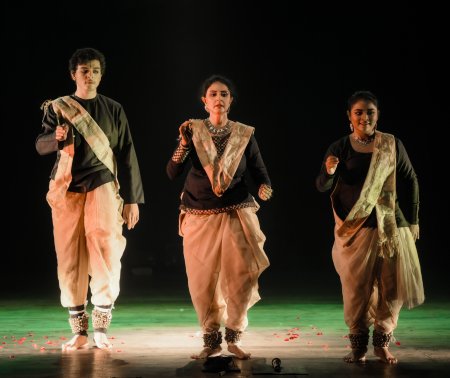 Alokparna Guha & group 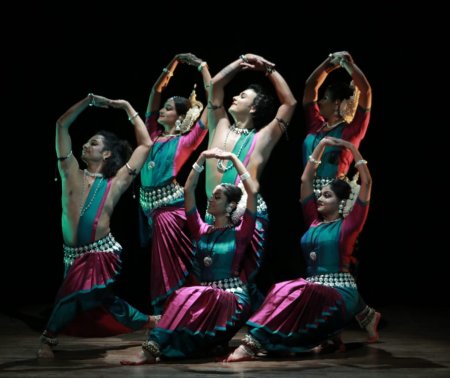 Rajib Bhattacharya & group Upasana Centre for Dance has been organizing the Navadisha festival for many years, aiming to popularize and promote various dance forms. The festival highlights the fusion of traditional roots with contemporary ideas, showcasing the evolution and creativity within classical dance. The festival showcased mythological stories found in great abundance in our ancient texts; educative pieces like tracing the history of Kathak; didactive pieces like the instruments mentioned in the Natyashastra; philosophical ideas of longing and bliss; love story destined to a poignant end; pure dance pieces that are rooted in the traditional repertoire of the re-constructed idiom of dance and rounded off with the Buddha's message of humanity to the world. Topical themes and social issues through the idiom of dance was a far cry.  Tapati Chowdhurie trained under Guru Gopinath in Madras and was briefly with International Centre for Kathakali in New Delhi. Presently, she is a freelance writer on the performing arts. |